

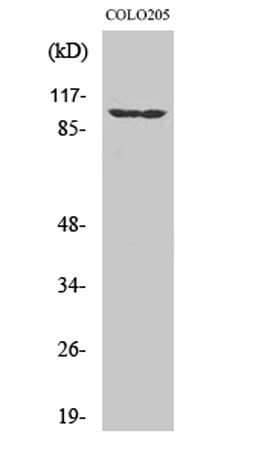
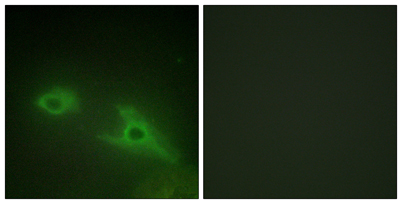
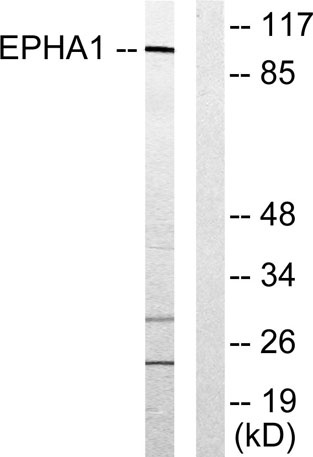
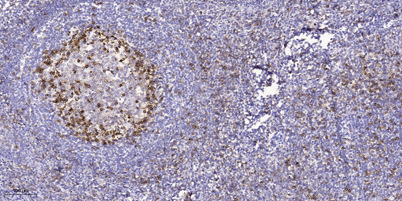
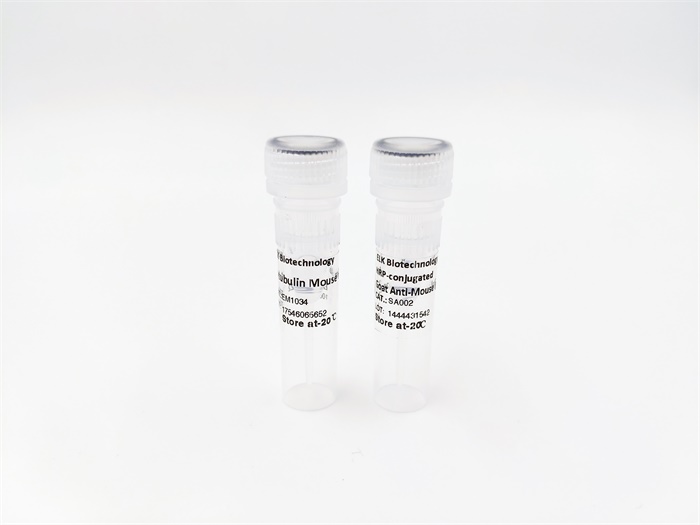



EphA1 rabbit pAb
 One-click to copy product information
One-click to copy product information$148.00/50µL $248.00/100µL
| 50 µL | $148.00 |
| 100 µL | $248.00 |
Overview
| Product name: | EphA1 rabbit pAb |
| Reactivity: | Human;Rat;Mouse; |
| Alternative Names: | EPHA1; EPH; EPHT; EPHT1; Ephrin type-A receptor 1; hEpha1; EPH tyrosine kinase; EPH tyrosine kinase 1; Erythropoietin-producing hepatoma receptor; Tyrosine-protein kinase receptor EPH |
| Source: | Rabbit |
| Dilutions: | Western Blot: 1/500 - 1/2000. Immunohistochemistry: 1/100 - 1/300. Immunofluorescence: 1/200 - 1/1000. ELISA: 1/20000. Not yet tested in other applications. |
| Immunogen: | The antiserum was produced against synthesized peptide derived from human EPHA1. AA range:541-590 |
| Storage: | -20°C/1 year |
| Clonality: | Polyclonal |
| Isotype: | IgG |
| Concentration: | 1 mg/ml |
| Observed Band: | 108kD |
| GeneID: | 2041 |
| Human Swiss-Prot No: | P21709 |
| Cellular localization: | Cell membrane ; Single-pass type I membrane protein . |
| Background: | This gene belongs to the ephrin receptor subfamily of the protein-tyrosine kinase family. EPH and EPH-related receptors have been implicated in mediating developmental events, particularly in the nervous system. Receptors in the EPH subfamily typically have a single kinase domain and an extracellular region containing a Cys-rich domain and 2 fibronectin type III repeats. The ephrin receptors are divided into 2 groups based on the similarity of their extracellular domain sequences and their affinities for binding ephrin-A and ephrin-B ligands. This gene is expressed in some human cancer cell lines and has been implicated in carcinogenesis. [provided by RefSeq, Jul 2008], |
-
 Western Blot analysis of various cells using EphA1 Polyclonal Antibody
Western Blot analysis of various cells using EphA1 Polyclonal Antibody -
 Immunofluorescence analysis of HeLa cells, using EPHA1 Antibody. The picture on the right is blocked with the synthesized peptide.
Immunofluorescence analysis of HeLa cells, using EPHA1 Antibody. The picture on the right is blocked with the synthesized peptide. -
 Western blot analysis of lysates from COLO205 cells, using EPHA1 Antibody. The lane on the right is blocked with the synthesized peptide.
Western blot analysis of lysates from COLO205 cells, using EPHA1 Antibody. The lane on the right is blocked with the synthesized peptide. -
 Immunohistochemical analysis of paraffin-embedded human tonsil. 1, Antibody was diluted at 1:200(4° overnight). 2, Tris-EDTA,pH9.0 was used for antigen retrieval. 3,Secondary antibody was diluted at 1:200(room temperature, 45min).
Immunohistochemical analysis of paraffin-embedded human tonsil. 1, Antibody was diluted at 1:200(4° overnight). 2, Tris-EDTA,pH9.0 was used for antigen retrieval. 3,Secondary antibody was diluted at 1:200(room temperature, 45min).

 Manual
Manual